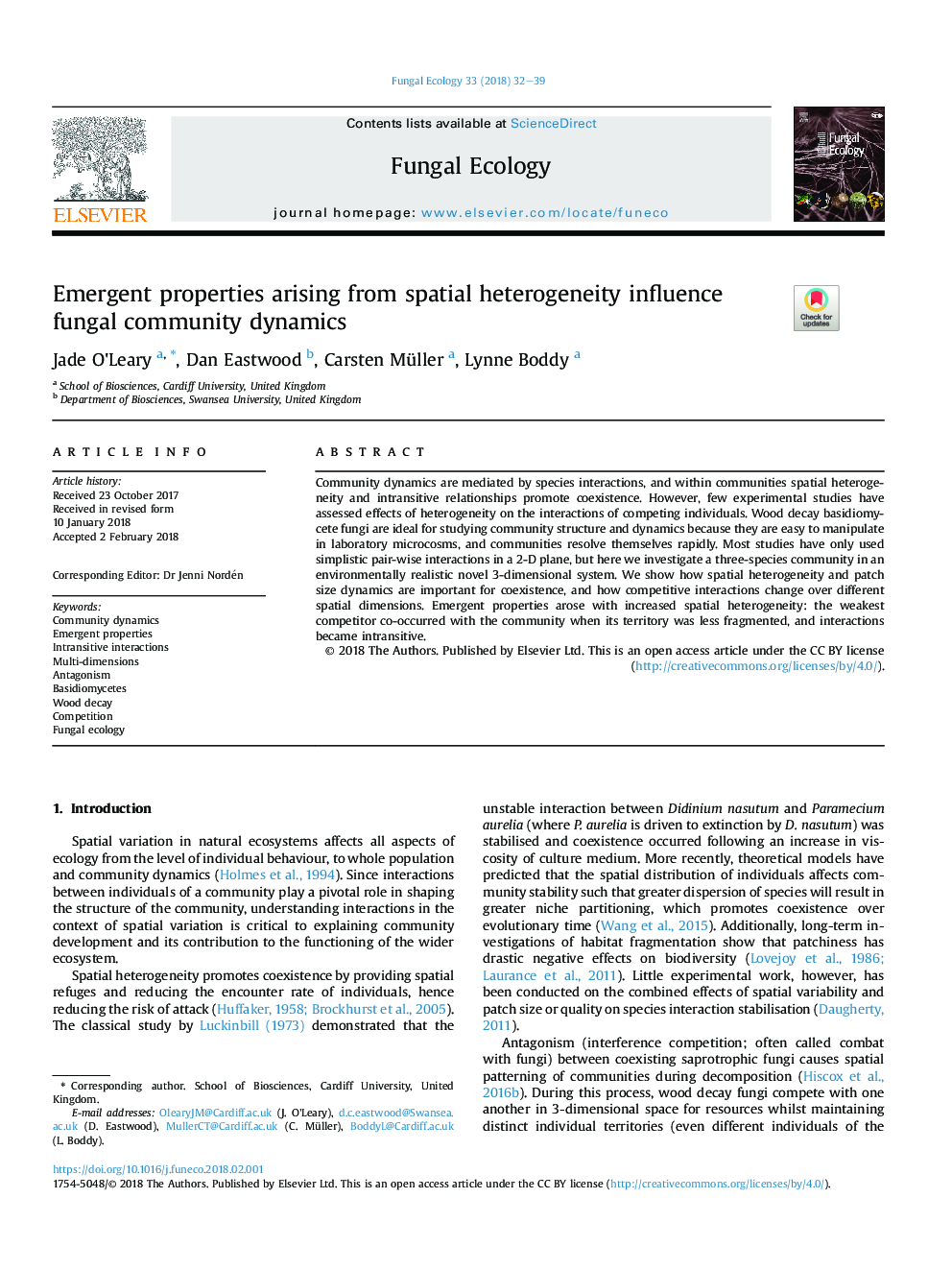| Article ID | Journal | Published Year | Pages | File Type |
|---|---|---|---|---|
| 8384222 | Fungal Ecology | 2018 | 8 Pages |
Abstract
Community dynamics are mediated by species interactions, and within communities spatial heterogeneity and intransitive relationships promote coexistence. However, few experimental studies have assessed effects of heterogeneity on the interactions of competing individuals. Wood decay basidiomycete fungi are ideal for studying community structure and dynamics because they are easy to manipulate in laboratory microcosms, and communities resolve themselves rapidly. Most studies have only used simplistic pair-wise interactions in a 2-D plane, but here we investigate a three-species community in an environmentally realistic novel 3-dimensional system. We show how spatial heterogeneity and patch size dynamics are important for coexistence, and how competitive interactions change over different spatial dimensions. Emergent properties arose with increased spatial heterogeneity: the weakest competitor co-occurred with the community when its territory was less fragmented, and interactions became intransitive.
Keywords
Related Topics
Life Sciences
Agricultural and Biological Sciences
Ecology, Evolution, Behavior and Systematics
Authors
Jade O'Leary, Dan Eastwood, Carsten Müller, Lynne Boddy,
